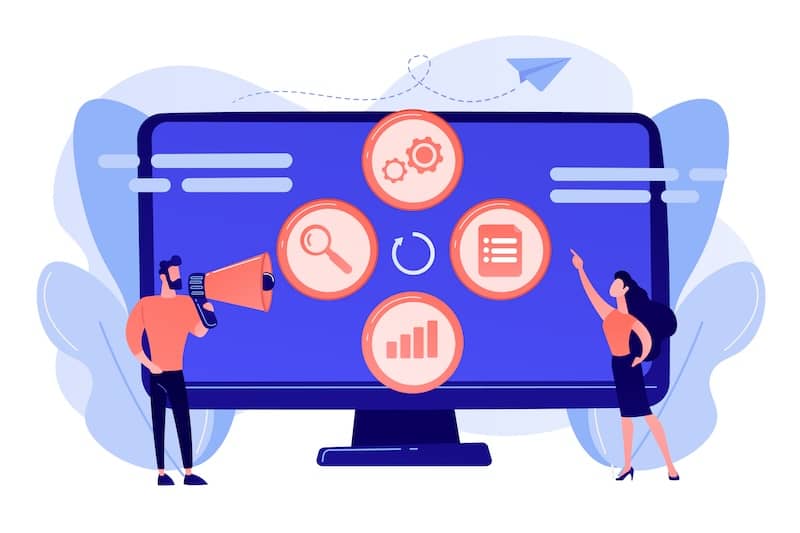You’ve got a dream—a business idea you believe in and can’t stop thinking about. But before you invest weeks into logos, product tweaks, and building a full-blown website, there’s a smarter, faster way to find out if your idea has traction: launch a one-page sales funnel for your small business.
Why start there? Because the market doesn’t lie. You don’t need more opinions from friends or feedback loops that go nowhere. What you need is data: real clicks, real signups, real buyer behavior. That one page can show you if your idea has legs or if it’s time to shift gears before you pour in more time, money, or energy.
A one-page funnel isn’t just a shortcut. It’s a strategy. It gives you feedback before you invest too much time, energy, or money into something the market may not want. When you lead with results, not assumptions, you build smarter.
In this blog, we’ll walk you through validating your idea using a single funnel page. Stop guessing, start growing, and move one step closer to the business you’ve been dreaming about.
Why Traditional Validation Slows You Down
The old way to test a business idea is long and complicated. You build a brand, set up a full website, launch social channels, and try to develop the product before you know whether anyone wants it.
This approach is slow, expensive, and risky. You get trapped in perfection mode before you’ve proven demand.
But here’s the truth: the market decides. And the fastest way to get their verdict is to give them something to respond to.
That’s where a one-page funnel comes in.
What Is a One-Page Funnel?
A one-page funnel is a focused page designed to test one thing: your core idea. Whether it’s a product, service, course, or offer, this page presents the value clearly and invites visitors to take a single action.
That action might be:
- Signing up for a waitlist
- Downloading a free lead magnet
- Pre-ordering your offer
- Booking a discovery call
- Buying a low-ticket version of your offer
The goal is not to pitch everything. It’s to test one idea with one message for one audience. With an intuitive funnel builder, you can build this page in under an hour using templates proven to convert. You spend time learning, not designing.
Why One Page Is Enough to Get Proof
You don’t need a full funnel to discover if your idea works. You just need to answer three key questions:
- Are people clicking on your offer?
- Are they opting in, buying, or showing interest?
- Are they engaging with your messaging?
One funnel page gives you data on all of this, without the overhead of building an entire brand around an untested concept.
It removes the fluff and forces you to focus on what matters most: does it solve a problem people care about? If the answer is yes, you’ll know fast. If it’s no, you can pivot before wasting resources.
What to Include on Your One-Page Funnel
Your funnel page must do three things well: grab attention, build belief, and drive action. Here’s a breakdown of how to set up your one-page:
Headline
Start with a clear, benefit-driven hook that speaks to the problem you solve.
Subheadline or Short Description
Reinforce the outcome and offer.
Visual or Video
Show the concept, transformation, or product.
Call-to-Action
Provide one button or form that invites immediate engagement.
Credibility Elements
If available, include testimonials, stats, or social proof.
Avoid clutter. Keep the page tight and conversion-focused. You’re testing a signal, not building an empire (yet).
Turn Small Actions into Big Results
Not everyone will buy the first time they see your idea. That’s why you should define your funnel to capture micro-commitments.
An opt-in form, for example, tells you someone is interested enough to share their email. A click on your CTA shows curiosity. These small actions indicate real demand, even before money changes hands.
Once you’ve captured that interest, you can nurture the lead through email automation, retargeting, or follow-up pages inside your funnel builder.
These micro-wins give you momentum while you refine your bigger offer.
Use A/B Testing to Find Your Winner
Even with one funnel page, you can test variations. Try two headlines, test different CTAs, and swap in other visuals.
Your funnel builder should make it easy to A/B split test your page and see what performs best. This isn’t just about optimization. It’s about learning what resonates with your audience.
You don’t have to be perfect on the first try. But every test brings you closer to an idea that truly converts.
When to Scale Beyond One Page
Once your page is converting—meaning people are opting in, buying, or booking—you’ve got validation. That’s when you can confidently scale.
Now you can build the rest of your funnel:
- Add upsells and downsells.
- Layer in email automation.
- Launch retargeting ads.
- Build out a content or community platform.
But none of this should happen until your single-page test proves it’s worth doing. One funnel page is your MVP (minimum viable product). It’s your fastest path to market clarity.
Start Building What Works
Too many business ideas die in development. Not because they’re bad, but because they weren’t tested fast enough. Your idea deserves a real shot. A one-page sales funnel for your business startup gives it one that’s fast, focused, and feedback-driven.
You don’t need to launch big. You need to launch smart. You need to find out if your message moves people to act. If it does, the rest will follow.








